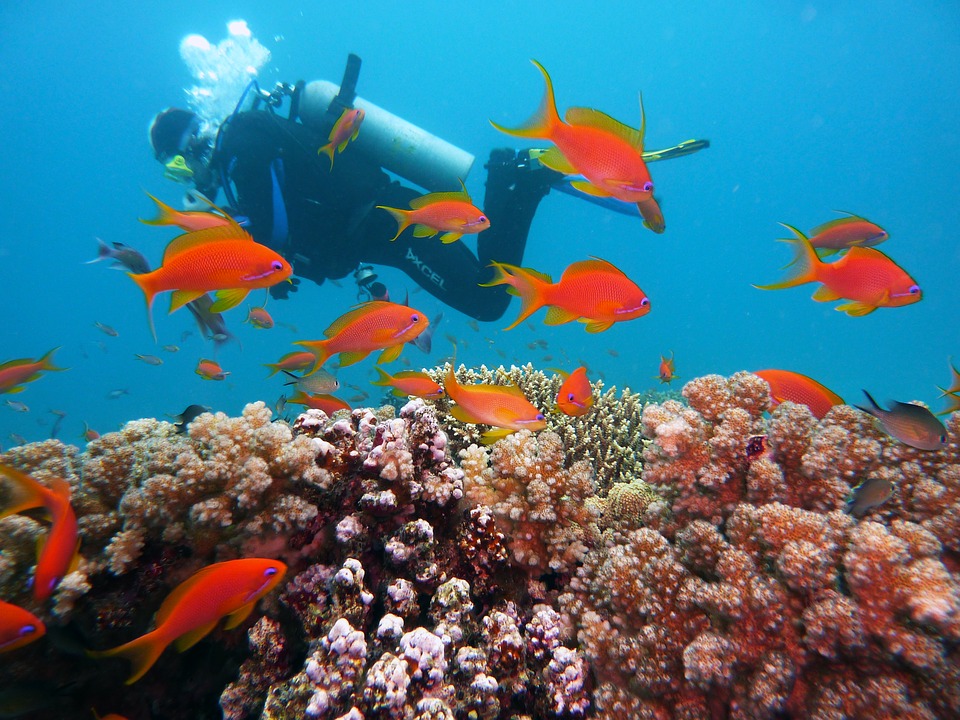3D printing is already helping countless industries. Now, it’s being implemented to save coral reefs.
You may be aware that coral reefs face tremendous danger in today’s world. In fact, half of the Great Barrier Reef near Australia has died since 2016.
In order to stem the potential extinction of the fragile coral species, many researchers and environmentalists leverage every solution they can think of. This now includes 3D printing.
How is Reef Design Lab using 3D printing to help humanity save coral reefs?

Dire Straits for Earth’s Coral Reef Populations
We briefly touched on the plight facing coral in a previous article. This revealed how CRISPR technology, known for gene therapy, helped reefs.
Sadly, it also revealed that scientists think 90% of Earth’s coral reefs could die by 2050.
This is where 3D printing comes in, but get this: it’s not a new solution. In fact, the idea has existed at least since 2016. Jeremy Deaton explains how it ostensibly works in this Popular Science article.
Read More: Ocean Cleanup Initiatives are on the Rise
The colors pink and white attract polyps (coral babies) into crevices and grooves. This keeps them safe from would-be predators and the colors indicate healthy coral. As mentioned in the article, scientists planned to recreate this environment with 3D printing.
There were also plans to create a dissolving coral from calcium carbonate. After dissolving, the 3D printed coral material would remove some acidity from the water.
But the idea gained traction once more these past few months thanks to Reef Design Lab.
Reef Design Labs Pairs Tech With Coral Structures
Replacing reefs lost due to climate change, pollution, and overfishing matters due to how important coral is to various ecosystems.
Not only do reefs protect from erosion and storms, but they also provide jobs and food for people (not to mention the animals they provide for). However, it isn’t all bad news.
Corals that die leave their hard structures (the reefs) behind for new coral. The problem lies in the length of time it takes new coral to inhabit the structures. As a result of large coral die-offs, there are many reefs, but much less coral.
But Reef Design Labs looks at their Modular Artificial Reef Structures (MARS) as a path to create new reef habitats.
The 3D-printed ceramic material showcases lattices to mimic true reefs. Divers can piece the modules together after deploying them from small boats.
Reef Design Lab hopes that MARS can help rejuvenate old colonies and create entirely new ones. They plan to pair this tech with coral farming or places where humans cultivate coral for reef restoration or commercial reasons.
They conducted their first test run in the Maldives, imitating their natural structure. “[Reef Design Labs] actually designed the structure based on the corals that are most widely growing in the Maldives…” Aminath Shauna, a spokesperson for Summer Island Maldives and native Maldivian, said.
She further added, “…corals can easily attach themselves . . . which we can’t do just building regular concrete structures.”
Benefits to This Modular Approach
Since MARS is modular, the system doesn’t need large machinery for deployment.
This means that MARS can be deployed in more remote locations in order to help more coral reefs. MARS can also be used at a lower cost comparatively, as well.
After being printed and molded, steel reinforcement adds durability and marine concrete fills the hollow pieces. As such, users can also tailor the system to their needs and goals. And the coral can be implanted in any groove or crevice in the system.
But the MARS system isn’t the only egg in the Reef Design Lab basket.
They also teamed up with the Sydney Institute of Marine Science (SIMS) to produce a seawall with crevice homes for sea creatures. Alex Goad, leader of Reef Design Lab, said that it’s all a part of the initiative to work alongside nature.
“When building a new seawall in the future, instead of making a flat concrete seawall, you could include these strange parametric patterns or water-retaining devices, like rock holes and that sort of thing, to increase the biodiversity on the seawall.
Unfortunately, it’s inevitable that we will continue to build into the marine environment, so really Reef Design Lab is looking at what’s a better way to do that. How can we do that and build with nature and for nature.”
While it is only a band-aid to the issue, 3D printed coral reefs may still prove useful.

















Comments (0)
Least Recent